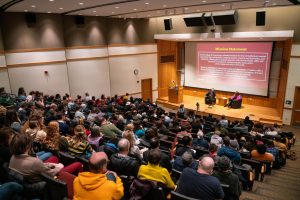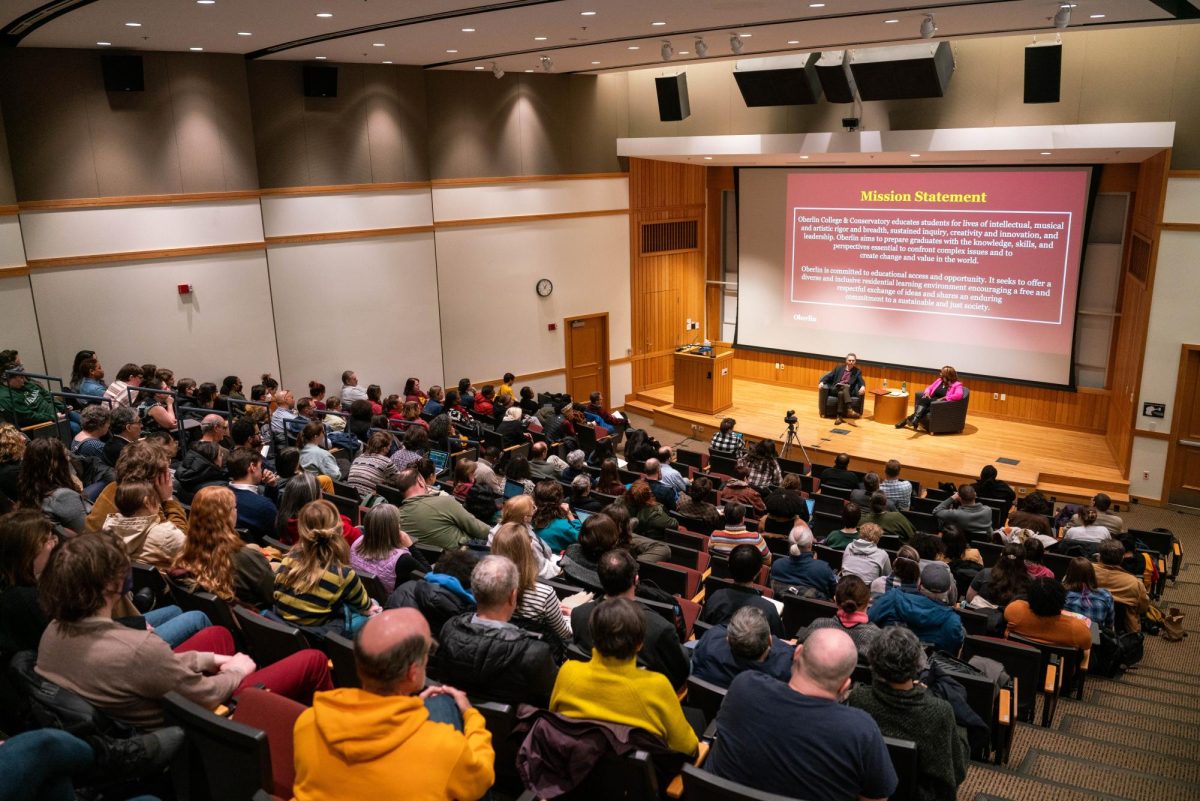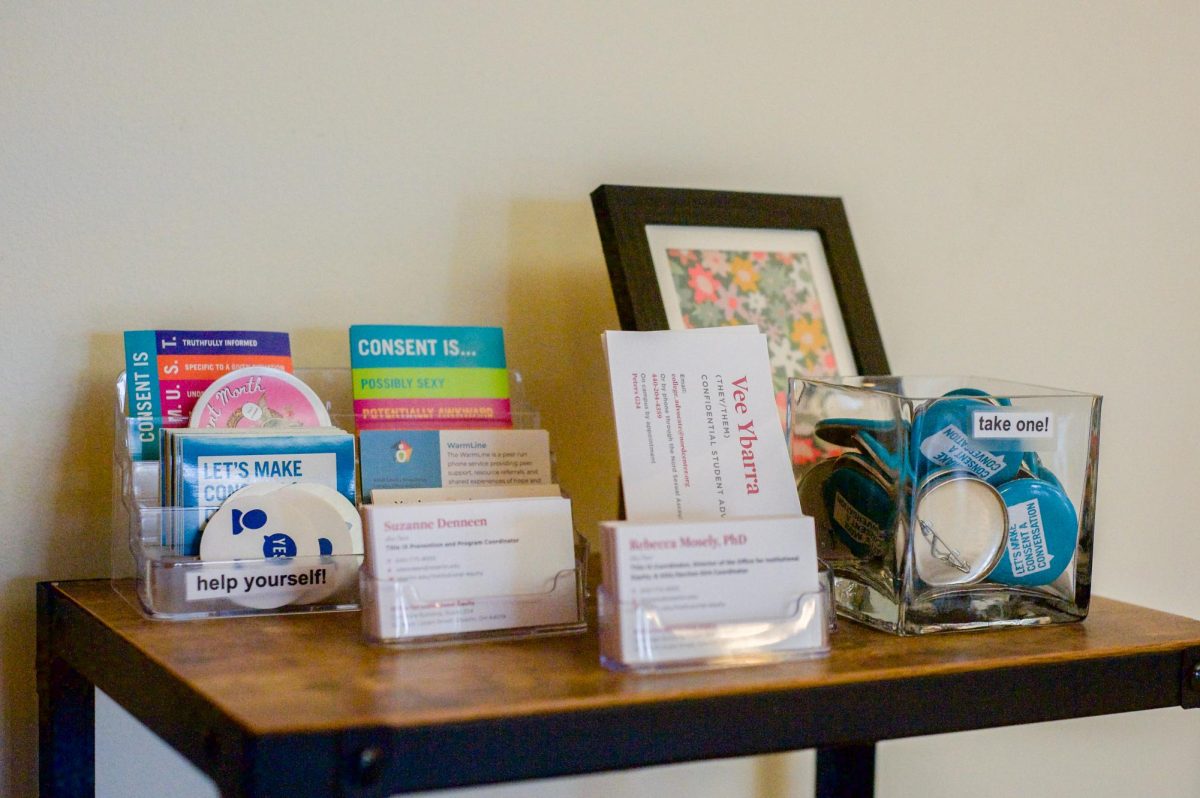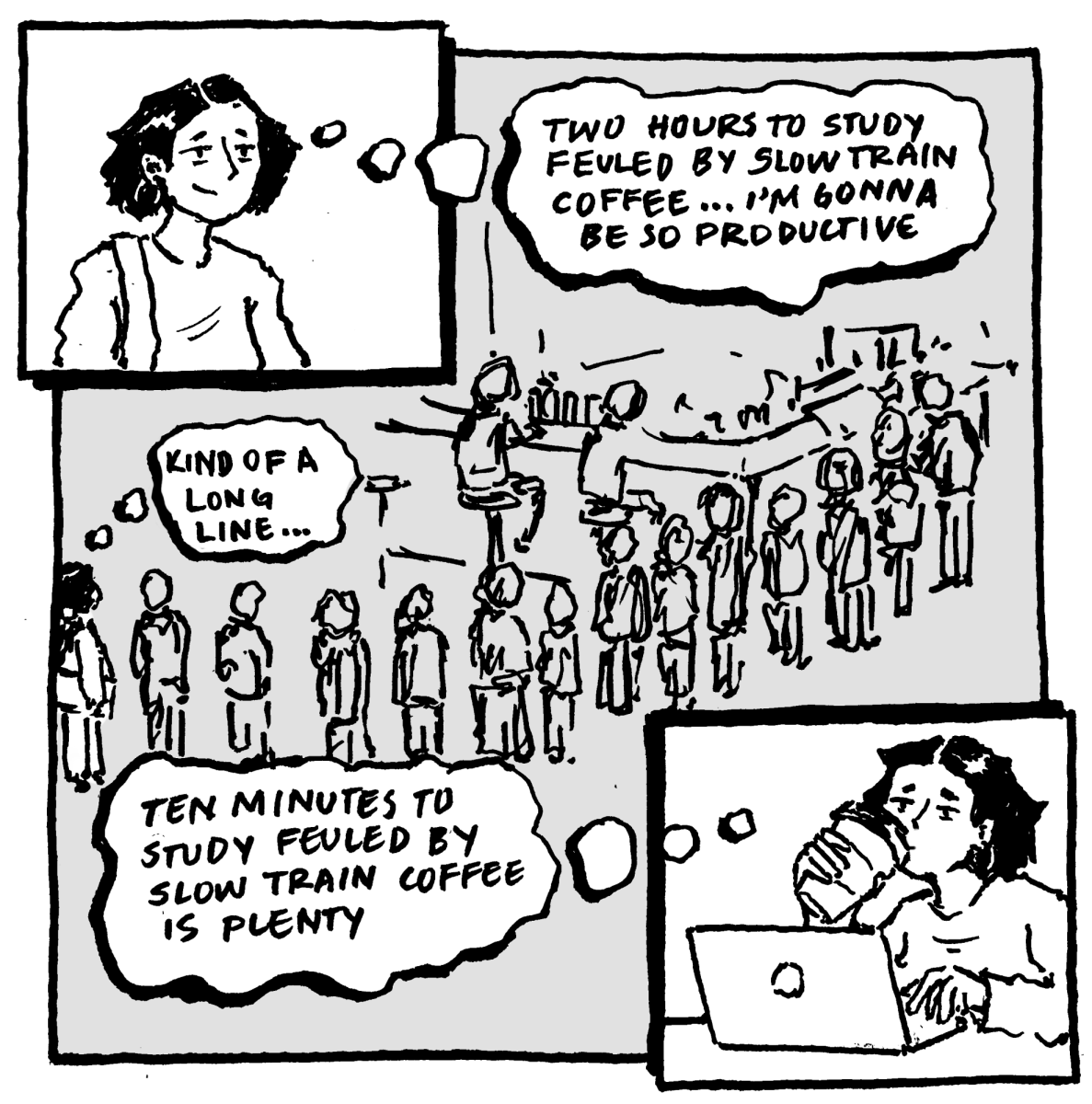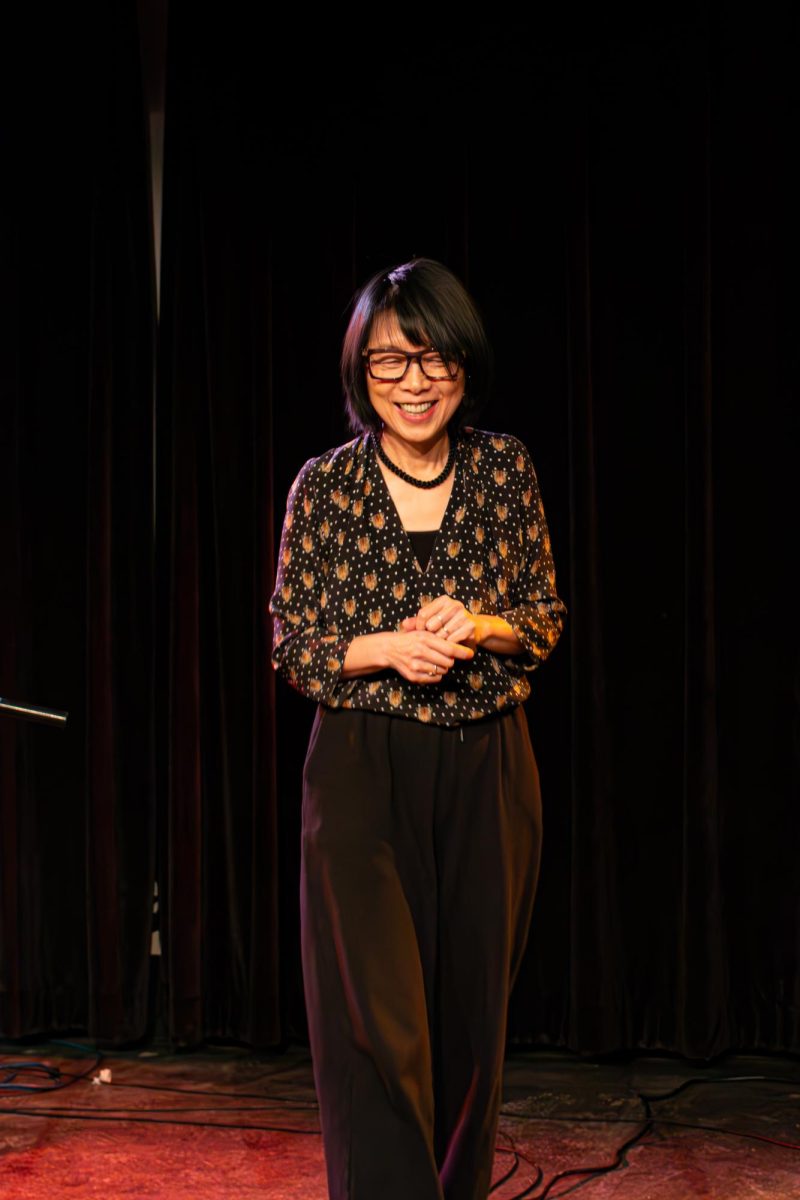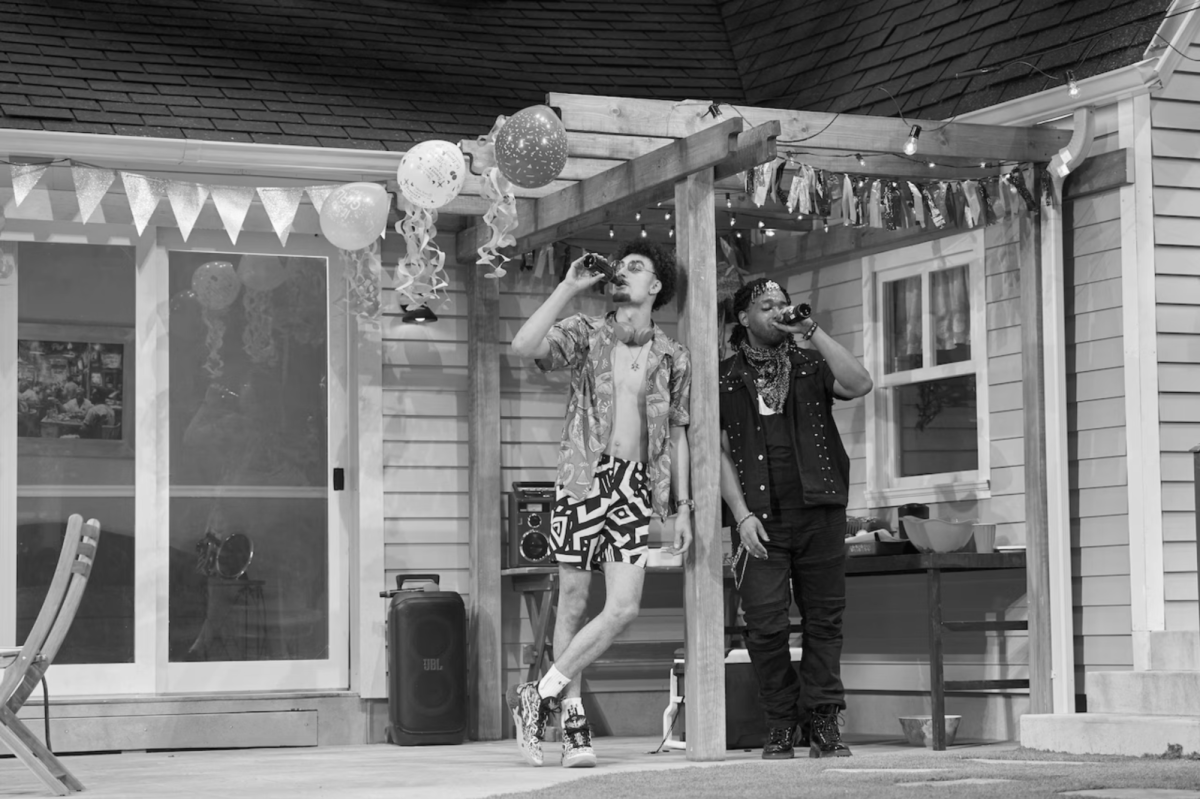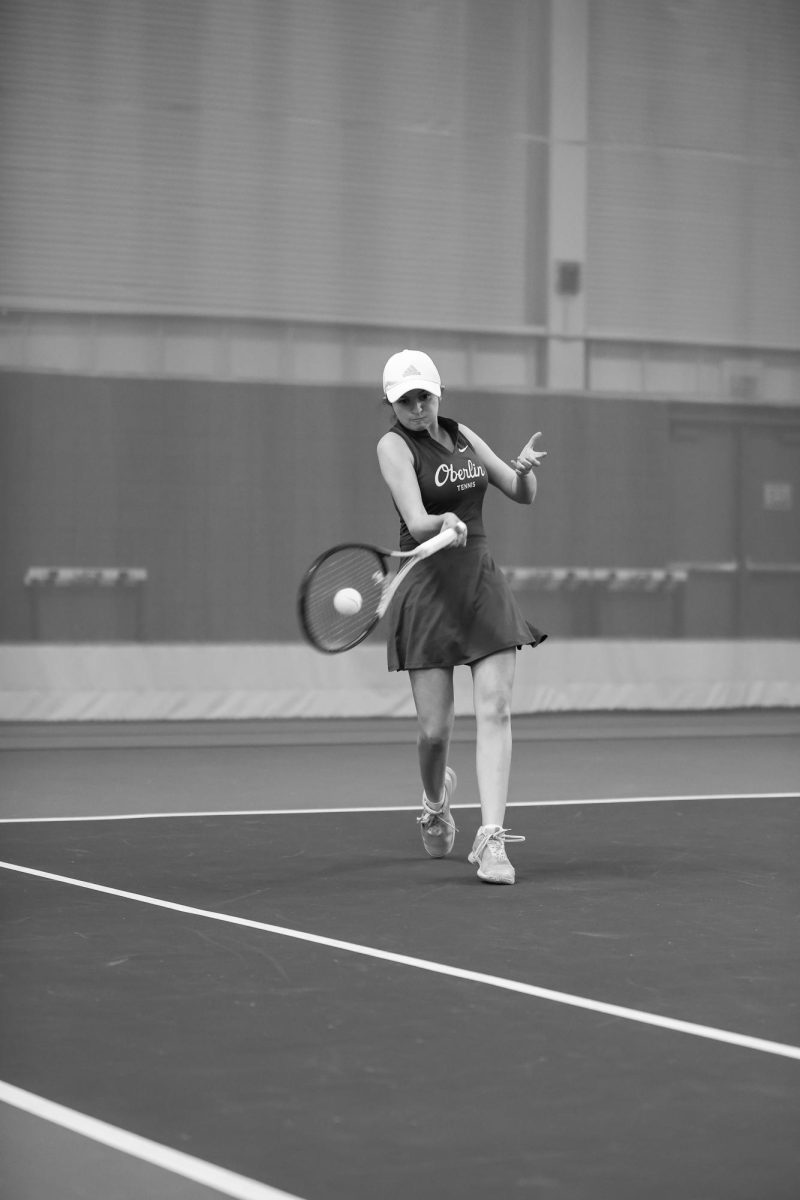Separate but Equal? The State of Club Sports
October 14, 2011
Any given weekday, within the seemingly quiet bowels of Hales Gymnasium, the sovereign of club sports operates in hurried solitude. Maybe Director or Recreation and Club Sports Betsy Bruce, the self-described “Athletic director for everything but varsity sports,” will be trying to get a hold of the treasurer of The Billygoats Gruff, Oberlin’s Men’s Rugby team; perhaps, as she was last week when days of unforgiving Ohio rain forced the North Fields into temporary closure, she’ll be urgently procuring a new site for the Ultimate Frisbee teams’ annual tournament. She is the solitary face of club sports at Oberlin College.
Meanwhile, just a short jaunt across the varsity soccer and field hockey teams’ prim practice fields — fields that club athletes will never use — and adjacent to the brand-new Kahn track and historic Savage Stadium — on which club teams will never compete — is Philips Gymnasium. In one of its many offices sits the vaunted Topher Grossman, last season’s North Coast Athletic Conference Lacrosse Coach of the Year.
The coach has the reputation for a competitive streak, a novel concept for a success-starved program that he says “just wanted to win” when he got here two years ago. He is one of the many red and yellow-clad coaches sitting within their offices, refining their teams’ upcoming practices, reading up on training techniques and recruiting potential future Yeomen. They are the many faces of Oberlin’s varsity sports.
Even a cursory examination of each department reveals an obvious physical difference between club and varsity sports. Club Sports’ only staffer dwells in a seldom-used, isolated building on the outskirts of campus, while the College’s varsity sports are nestled in a location far more used and accessible.
“It has a lot to do with legitimacy,” says college sophomore Dan Melzer, a former varsity athlete under Grossman and current club Frisbee player.
You might have heard the story before: Oberlin’s varsity sports — more competitive, time consuming and intense than their Club counterparts — “deserve” the better facilities.
But does the chasm between Hales and Philips represent a deeper segregation between the club and varsity institutions and their athletes? At first glance, you might be tempted to say yes. But, as with so much here at Oberlin, appearances can deceive.
Varsity sports live in Philips Gym, an association heavy-handedly reinforced by the massive “Go Yeo’” insignias that now grace its windows. The sports represented in Philips are governed by the Athletics department, headed by Delta Lodge Director of Athletics and Physical Education William Roth, and fall under the purview of the massive intercollegiate regulating body known as the NCAA. Despite the fact that Oberlin is Division III and cannot offer athletic scholarships, it’s still big business — as the newly revamped facilities within Philips would attest.
By contrast, club sports operate in essentially the same way as all other student organizations. Like all clubs on campus, they report to the Dean of Students and receive an allotment of funds from the Student Finance Committee — 18 percent of SFC’s total budget, in fact.
Yet in spite of these ostensibly clear distinctions, the College’s club sports have functioned for years without their own identity or even a leader separate from their varsity brethren. For example, whenever a club team had a problem, complaints would often mistakenly wind up in the Athletics department — languishing in bureaucratic limbo without ever being resolved.
Bruce, who has worked in a variety of capacities for Oberlin athletics over the years, remembers a particular incident that sparked a change in the dynamic. The women’s club rugby team sent an athlete streaking around its game field on back-to-back weekends a couple of years ago, and the Athletics department could only voice its disapproval. No one had the jurisdiction to hold accountable, or “punish,” the team.
Enter Bruce’s current job. After working in Philips for three decades, the Athletics department asked Bruce last year if she wanted a new office space as sovereign of club, intramural and recreational athletics. She jumped at the opportunity to move into Hales, which now functions as a command post for all things club athletics.
“I love it,” says Bruce of her fresh digs. “I absolutely love it.” Rather than exile, it is in Hales that club athletics has found paradise, and, increasingly, the all-important “legitimacy.”
While Bruce had a large hand in the recent transformation of club athletics, the real credit goes to the students that pushed for change. ‘”Sovereign” Bruce, far from being the dictator her title suggests, employs a remarkably hands-off management approach.
“I’m advising them,” says Bruce. “I prefer not to be the limit-setter.”
Team members coordinate practice times, set schedules, manage budgets, contact recruits and plan training, meaning students exercise most of the power.
“In club sports,” in Bruce’s opinion, “the athletes aren’t getting spoon-fed.” That’s different from varsity athletes, she says, who don’t have as much responsibility “because they have coaches.”
But Kerry Jenkins, head coach of the Yeowomen basketball team, disagrees. He, too, employs a remarkably hands-off approach with his athletes.
“I let the kids be more of an integral part of the development of the program, I let them have more of an input over … what we do and don’t do,” said Jenkins. “I let them be themselves.”
Jenkins, previously an assistant coach at larger programs at the University of Vermont and Yale University, sees more common ground between the varsity and club sports at Oberlin, saying that he felt that Oberlin’s varsity athletics were “different” the moment he stepped on campus for the first time four years ago.
“It’s a very individualistic experience,” he said of being an Obie. “It’s about following [your] own passion and own charge.”
He acknowledges that this individuality can sometimes cause a challenge for Oberlin varsity team sports, which have historically struggled. To “form that cohesive unit” necessary for success, Jenkins sometimes needs to remind his athletes “to check some of that [individuality] at the door.”
But he isn’t about to ask his athletes to deviate from who they are, which is what brought athletes here and gave them admittance into Oberlin to begin with. “You are,” he tells his athletes, “here for a reason.”
As much as Jenkins’s words sound like stereotypical Oberlin self-schmoozing, they’re not. He doesn’t believe in the perceived divide between varsity and club sports, a tension he says he’s never encountered.
And while Bruce contends that the two programs often attract students with different athletic ambitions and time commitments, she agrees.
“To be honest, I’m tired of hearing about this,” reflects Bruce.
In the end, Bruce feels that both varsity and club athletes are “taking on another chunk” of the Oberlin experience, no different than an ExCo, theater production or ensemble.
But what both Bruce and Jenkins cannot stand is the deeper divide between athletes and non-athletes on campus.
“There are no dumb-jocks walking around campus,” he says. “More than anywhere I’ve ever been, [Oberlin’s] student-athletes represent” the student body at large. On the competitive field, varsity and non-varsity student-athletes are … showing the world who Oberlin is.”
Some remain skeptical. For example, first-year Jacob Ersel, not an athlete, recently voiced concern in The Grape that there might be a “changing paradigm” at Oberlin, one that favors the “laxbro” over the “hippies.”
Perhaps, says senior Maya Pincus, a former club rugby player who now runs on the varsity cross country team, Oberlin’s athletics are just the way they should be.
“There might be a ‘difference’ between club and varsity sports and between athletes and non-athletes,” Pincus said, “but that doesn’t mean they’re separate and that doesn’t mean that it’s a problem.”
After all, being different is what they tell us Oberlin is all about.



